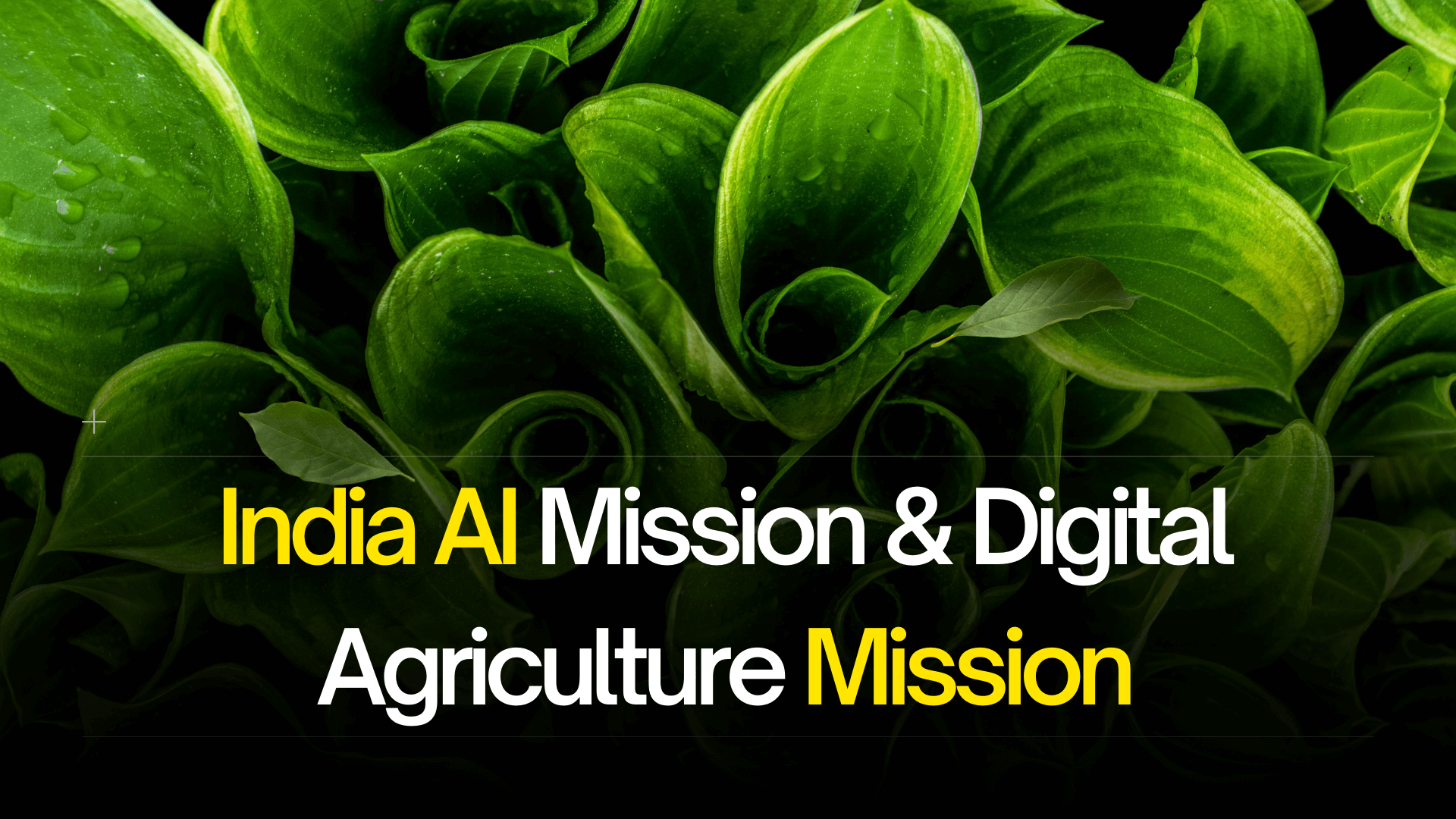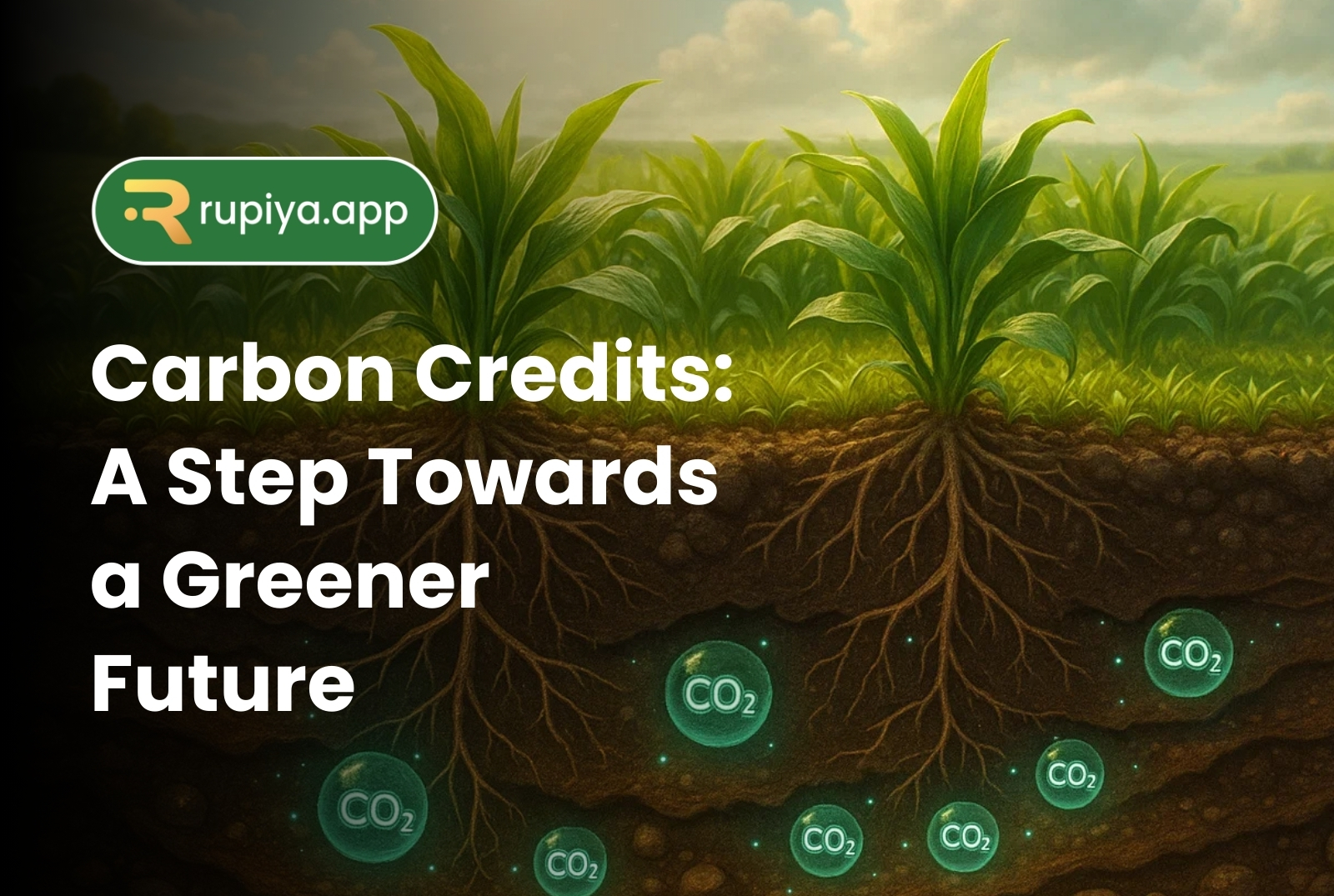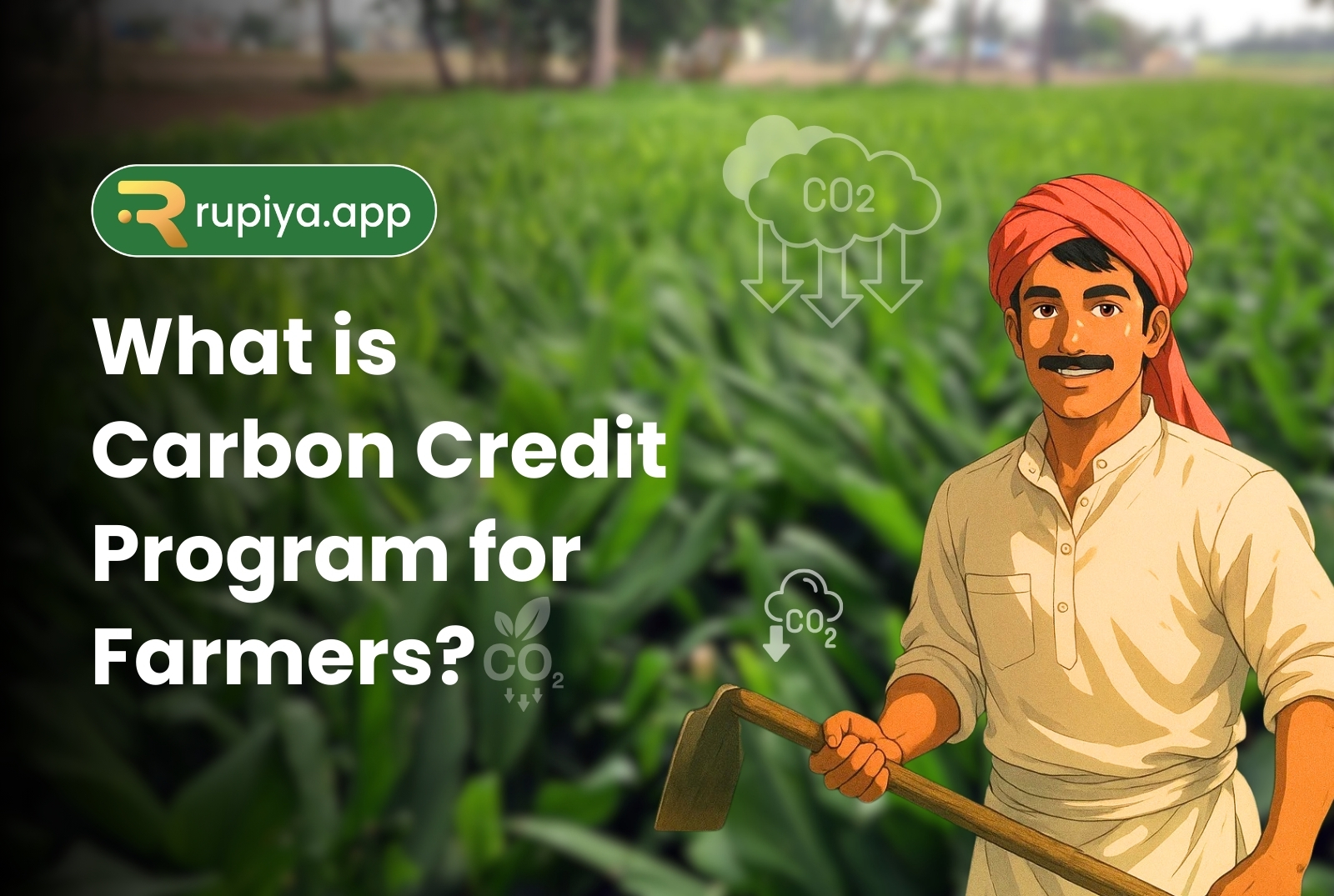Carbon Credit in Agriculture: A Win For Farmers

The Rise of Carbon Credit Gains for Indian Farmers
Carbon credits are at the heart of a global green revolution—empowering With voluntary carbon markets expanding, carbon farming stands out as a climate solution that supports rural livelihoods and boosts farmer incomes in developing countries.
India has over 50 active carbon farming projects and is set to launch a domestic carbon market. Surveying 841 farmers in seven villages across Haryana and Madhya Pradesh, this study found that most participants were large landholders from non-marginalized castes; results show that most carbon farmers were large landholders from non-marginalized castes, with only 4% of women participants, highlighting systemic exclusion.
Despite nearly 99% of farmers receiving no payments, many adopted practices aligned with additionality, such as no-tillage, intercropping, and tree planting.
However, a 28% disadoption rate raises permanence concerns. ‘Carbon Core’ companies—those solely focused on carbon credits—proved more effective in promoting regenerative practices than corporate subsidiaries with unrelated primary businesses. countries to cut emissions while growing their economies. India is stepping up as a key player in this shift.
As we work towards becoming a $7 trillion economy by 2030, we’re making it clear: progress doesn’t have to come at the planet’s expense.
Despite being the world’s third-largest emitter, our per-capita emissions are less than half the global average—proof that sustainable growth is possible. Guided by the Panchamrit Pledge, our 2070 net-zero goal, and initiatives like Mission LiFE and the Green Credit Program, we’re reshaping how development and climate action work together.
By launching the Carbon Credit Trading Scheme and establishing the Indian Carbon Market, India is building a strong foundation for climate finance and green innovation. These efforts not only reduce emissions but also create opportunities across sectors and communities.
The impact of carbon credits goes far beyond emissions—it brings environmental, economic, and social benefits that are transforming how we grow.
Ready to turn your farm into a source of income and climate impact
Join thousands of Indian farmers already earning from carbon credits.
Start your journey with rupiya.app
How Agriculture Contributes to Carbon Sequestration
- Role of regenerative and residue-free farming
Regenerative farming techniques like no-till, cover cropping, and agroforestry improve soil health and help capture atmospheric carbon, while residue-free practices reduce emissions and enhance soil carbon storage. - Soil Carbon Sequestration Through Regenerative Agriculture
Regenerative agriculture practices not only improve soil health and farm resilience but also play a vital role in sequestering atmospheric carbon.To better understand their impact, scientific literature has quantified the average carbon sequestration rates associated with key regenerative methods used in field crop systems.
The table below highlights these rates—measured in tons of carbon sequestered per hectare per year (t C/ha/yr)—based on data from the United States and Europe:
- Carbon Sequestration Rates by Regenerative Practice
| Regenerative Agriculture Practices | Carbon Sequestration (t C/ha/yr) |
|---|---|
| Cover Cropping | 0.32 ± 0.08 |
| Reduced Tillage/No-Till | 0.47 ± 0.14 |
| Crop Rotation | 0.65 ± 0.25 |
| Agroforestry | 3.9 ± 0.24 |
| Nitrogen Management | 0.54 ± 0.27 |
| Animal Integration | 0.47 ± 0.24 |
From Soil to Sale: How Farmers Earn Carbon Credits
- Cover cropping – Plant cover crops during the off-season to increase soil organic carbon.
- Reduced tillage / No-till farming – Minimize soil disturbance to retain soil carbon.
- Crop rotation and diversification – Enhance soil structure and carbon capture.
- Agroforestry – Integrating trees into farming systems for long-term carbon storage.
- Improved fertilizer and nutrient management – Reduce nitrous oxide emissions.
- Water-efficient practices – Such as alternate wetting and drying (AWD) in paddy fields to lower methane emissions.
- Residue management – Avoid stubble burning and incorporating organic residues into the soil.
- Biochar application – Stabilize carbon in soil for extended periods.
- Managed grazing and pasture improvement – Enhances soil carbon through grassland restoration.
- Baseline Assessment – Measure existing emissions and soil carbon before implementing practices.
- Project Registration – Enroll the farm/project with a recognized carbon standard (e.g., Verra, Gold Standard).
- Implementation and Monitoring – Adopt eligible practices and track performance using satellite data, field logs, or IoT tools.
- Third-party Verification – Accredited verifiers audit data and confirm actual carbon sequestration or emission reductions.
- Credit Issuance and Sale – Verified credits are issued and can be sold in voluntary or compliance carbon markets.
Monetization of Carbon Credits
Selling Carbon Credits in the Market
There are a few different ways carbon credits are traded, each with its own rules, players, and pricing models
1) Voluntary Carbon Markets
Individuals and businesses voluntarily buy carbon credits to offset their emissions, often to meet internal sustainability goals or public climate commitments.
Example: Verra’s Verified Carbon Standard (VCS) is one of the most widely used frameworks in the voluntary market.
2) Compliance Carbon Markets
Governments or regional bodies set mandatory emissions caps. Companies must purchase carbon credits to stay within limits.
Example: The EU Emissions Trading System (ETS) and similar models globally.
3) Carbon Credit Pricing
Prices vary widely—from $2 to $50 per credit—depending on factors like project type, quality, certification, and market demand. High-quality, verifiable credits typically fetch higher prices.
Common Obstacles and How rupiya.app Simplifies the Process
Challenges Farmers Face
- Lack of Awareness: Many are unaware of how carbon credits work or how to participate.
- High Entry Barriers: Complex verification processes, documentation, and upfront costs can be discouraging.
- Data & Monitoring Requirements: Continuous monitoring and reporting require tools and technical knowledge.
- Delayed Payments: Verifying and selling credits can take months or even years without proper support.
How rupiya.app Helps
- End-to-End Support: From onboarding and training to verification and credit sale.
- Tech-Enabled Monitoring: Uses satellite data, mobile tracking, and automated logs to reduce manual burden.
- Farmer-Friendly Interface: Simplified app design with support in local languages.
- Faster Payouts: Helps aggregate smallholder projects and fast-track monetization, ensuring farmers receive timely payments.
- Inclusive Approach: Works to involve smallholders, women, and marginalized communities in the carbon market ecosystem.
How farmers can benefit from sustainable farming and carbon trading
Sustainable farming offers a powerful opportunity for farmers to improve their land, lower input costs, and actively contribute to climate change mitigation. Practices like cover cropping, no-till farming, and crop rotation not only enhance soil health and water retention but also boost the soil’s ability to store carbon—transforming farms into effective carbon sinks.
Through carbon trading, farmers can monetize these efforts by selling carbon credits to organizations aiming to offset their emissions. This creates a meaningful income stream while supporting long-term environmental and economic resilience. As awareness and access to carbon markets grow, sustainable farming stands to become a cornerstone of both climate action and rural prosperity.
frequently asked questions
- I’ve never heard of carbon credits. How do they work for farmers?
Carbon credits are earned when farmers adopt eco-friendly practices like no-till farming or cover cropping, which reduce greenhouse gas emissions or increase carbon in the soil. These credits can then be sold to companies looking to offset their emissions—creating a new income source for you. - How do I know which farming practices qualify for carbon credits?
The app helps assess your current practices and recommends changes—like residue management or agroforestry—that qualify under verified carbon credit standards.
- Isn’t the registration and verification process too complicated?
It usually is—but that’s where we come in. app handles all the paperwork, registration, monitoring, and credit verification so you can focus on farming while we take care of the process.
- How long will it take to start earning from carbon credits?
Traditionally, it could take over a year. But with app’s faster monitoring tools and project aggregation, we help you start seeing returns sooner, and often within the first credit cycle.
- Are small farmers like me even eligible? Or is this only for big landowners?
Absolutely—app is designed to make the carbon market inclusive. We aggregate small farms into larger projects, which means even small and marginal farmers can earn from carbon credits.
- I’ve heard carbon projects mostly exclude women and marginalized communities. What’s different here?
app is committed to inclusive participation. We actively onboard women, smallholders, and marginalized farmers to ensure fair access and equal benefits.











